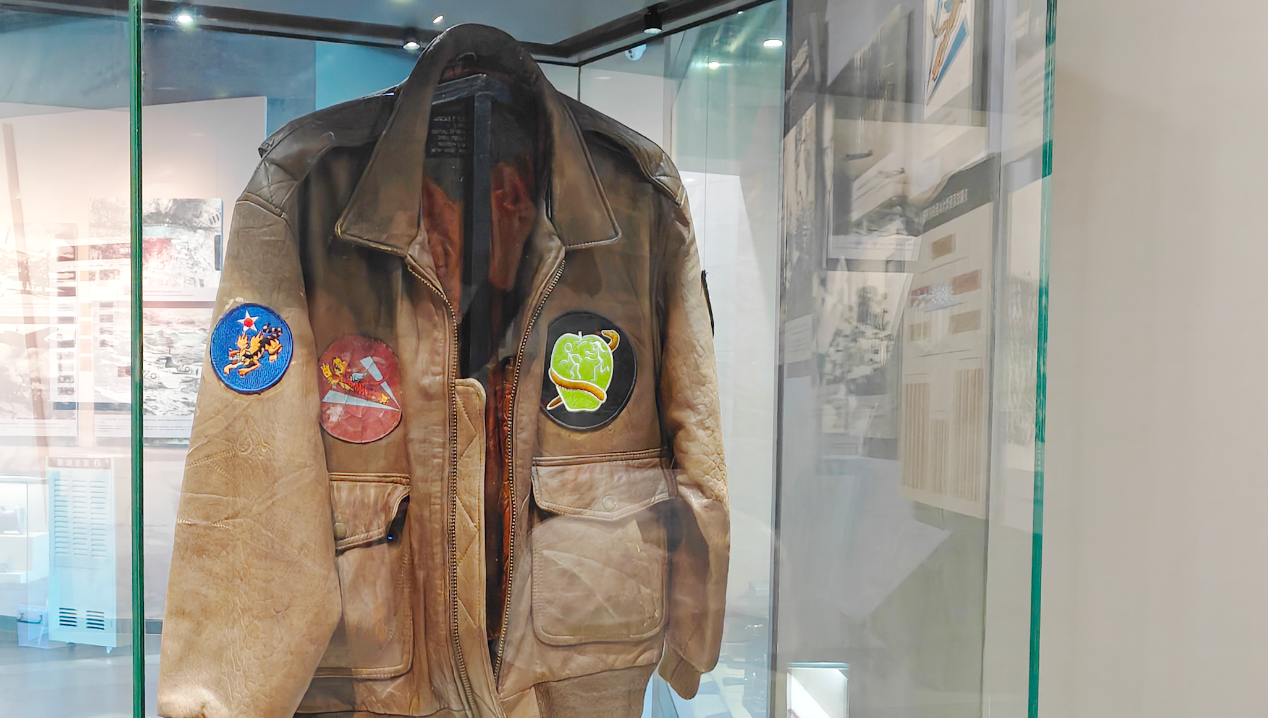Eighty years after the end of World War II, a county in central China still echoes with memories of international solidarity forged in wartime.
In Zhijiang Dong autonomous county in Huaihua, Hunan province, the Flying Tigers Memorial Museum stands to honor a remarkable chapter of shared history between China and the United States — the story of the American Volunteer Group, better known as the Flying Tigers, during the Chinese People's War of Resistance Against Japanese Aggression.
In 1937, the year Japan launched its full-scale invasion of China, Claire Lee Chennault, a retired lieutenant from the U.S. Army Air Corps, was invited by the Chinese government to serve as chief advisor to the Chinese Air Force and help develop its aerial capabilities.
In 1941, the Flying Tigers was officially formed in Zhijiang, with Chennault as the commander. That December, after two squadrons successfully fended off Japanese aircraft over Kunming, capital of Yunnan province, the name Flying Tigers spread across China.
Inside the museum that honors the Flying Tigers, visitors are captivated by a wall that displays the squadron emblems, tracing the four stages of their development in China. Most of the emblems feature cartoon-style wartime designs.

Emblems of the Flying Tigers squadrons, displayed at the Flying Tigers Memorial Museum in Zhijiang Dong autonomous county, Huaihua city, Hunan province. [Photo by Wang Xinguang/China.org.cn]
Through a large collection of artifacts, including fighter aircraft, personal belongings, original documents, and photographs, the museum portrays the mutual assistance and deep friendship between the Flying Tigers and the Chinese people.
One notable exhibit is a flight jacket worn by a Flying Tigers member, donated by a veteran during his return to Zhijiang for a cultural festival after WWII.
Sewn onto the back of the jacket is a blood chit, carrying a message in Chinese that reads: "This foreigner (American) has come to China to help in the war. Soldiers and civilians, please offer him rescue and protection."

A flight jacket of a Flying Tigers member, displayed at the Flying Tigers Memorial Museum. [Photo by Liu Jian/China SCIO]
The message was meant to identify Flying Tigers members who would parachute or crash-land in Japanese-occupied areas. By showing it to Chinese soldiers or civilians, they could quickly be recognized and receive help. It therefore became known as a life-saving chit.
The museum's exhibits not only reflect the camaraderie between the Chinese and American people in their joint fight against fascism, but also underscore a broader message — one of mutual respect and enduring friendship between nations.
Today, the museum continues to receive support from the U.S., including numerous donated artifacts — a testament to the enduring commitment of both nations to honor the legacy of the Flying Tigers.
Wu Jianhong, director of the museum, said that families of Flying Tigers members still visit China to donate items, keeping alive the shared spirit of cherishing peace.
"It can be said that the Flying Tigers Memorial Museum is a commemorative site jointly built by the Chinese and American people," Wu said.
Near the exit of the museum stands the Wall of Heroes, inscribed with the names of 882 Chinese Air Force soldiers and 2,197 Flying Tigers members who lost their lives during the war.

The Wall of Heroes inscribed with the names of Chinese Air Force soldiers and Flying Tigers members at the Flying Tigers Memorial Museum. [Photo by Wang Xinguang/China.org.cn]
"The names on the wall honor those heroes whose identities could be confirmed," said Deng Yu, a guide at the museum. "But many others remain unnamed — their sacrifices are remembered just the same."


 Share:
Share: 




 京公網安備 11010802027341號
京公網安備 11010802027341號